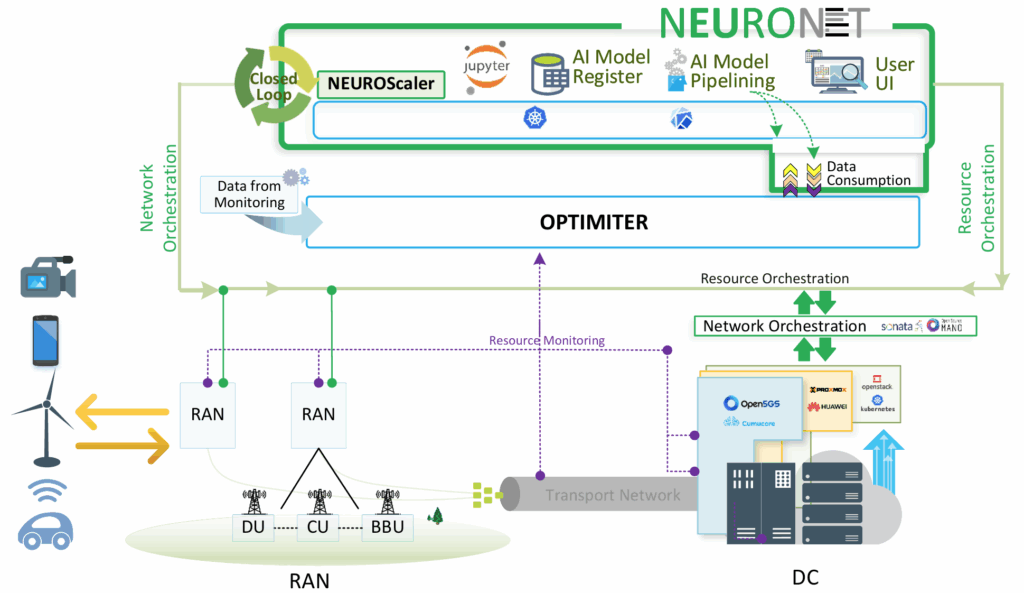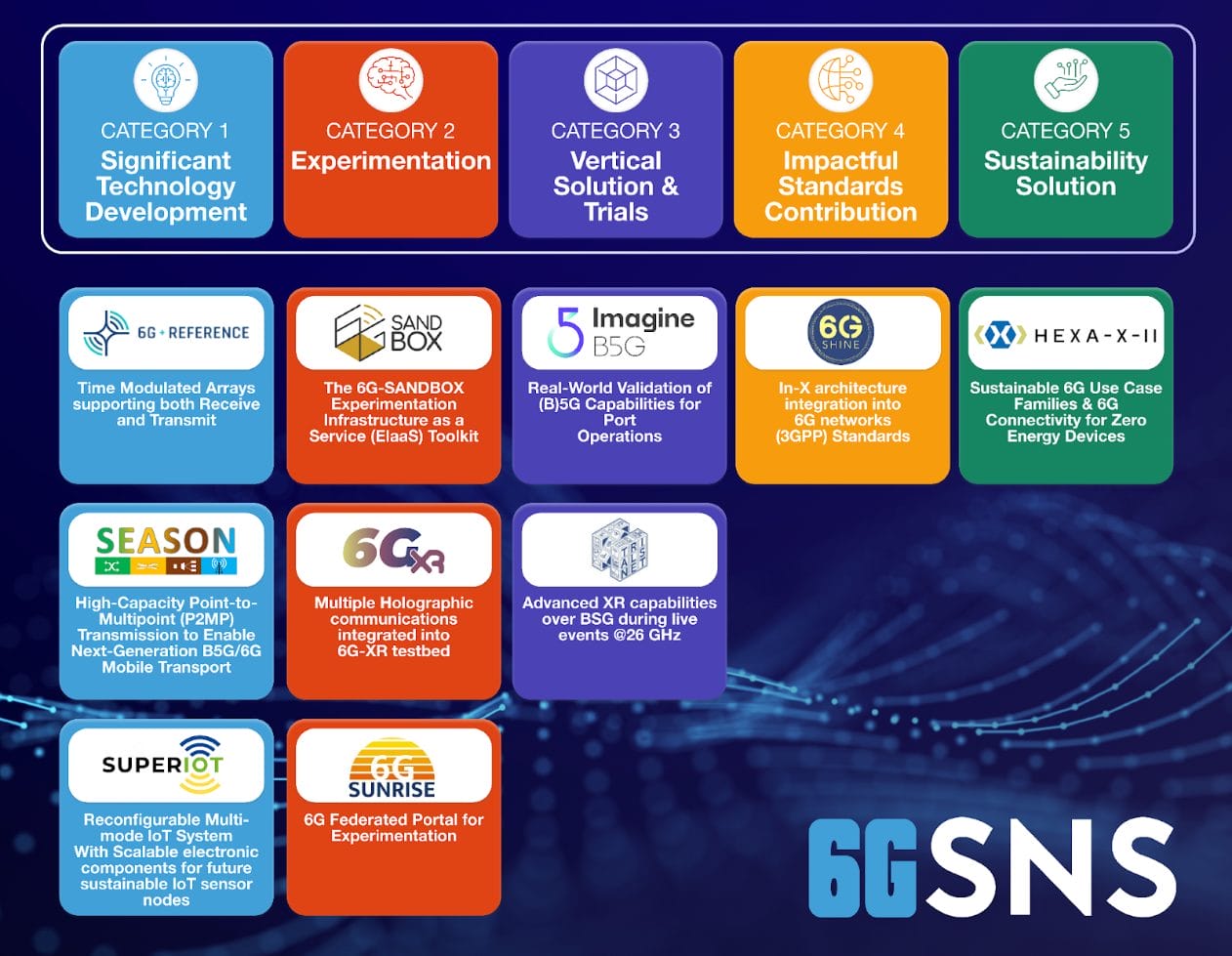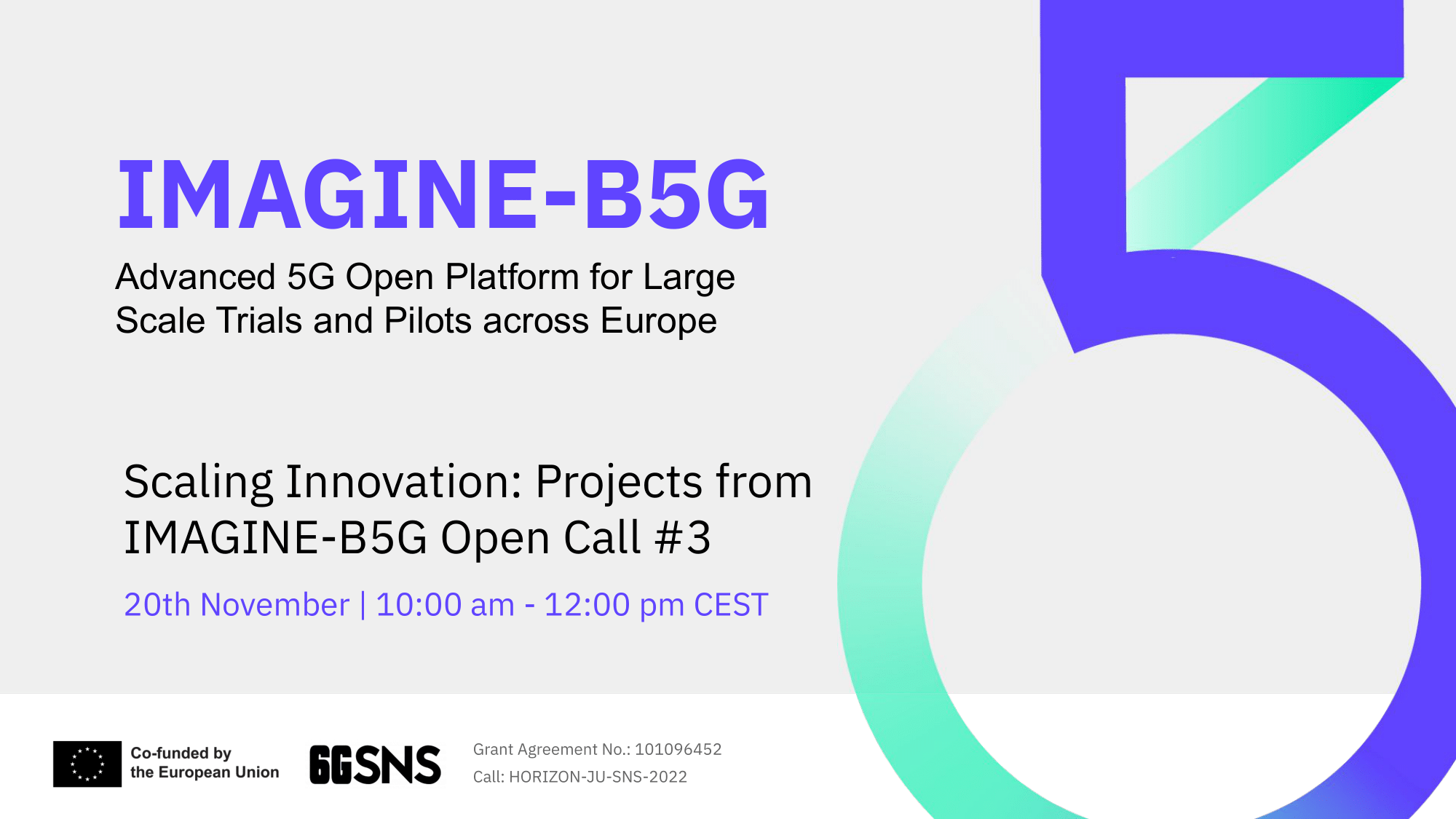iNtelligent Energy Usage-awaRe platfOrm for sustaiNable grEen neTworking (NEURONET), selected in Imagine-B5G Open Call #3, aims at designing and implementing an intelligent, energy-aware platform for sustainable networking using advanced AI/ML techniques to optimize energy consumption across 5G/B5G/6G infrastructure.
The platform will integrate advanced monitoring, predictive analytics, and closed-loop automation, enabling real-time energy efficiency improvements in the datacentre. This platform will consume data generated by the OPTIMITER monitoring system at the ITAV facility, allowing for enhanced energy-related insights, multi-step forecasting, and proactive resource management, as illustrated in Figure 1.

By integrating the network’s available APIs, NEURONET will support dynamic interventions, such as workload migration, scaling, and intelligent energy-aware optimizations, fostering greener and more efficient network operations. The platform will also adopt openness, programmability, modularity, and expandability as core design principles, and it will provide open interfaces and API-driven integration with external orchestrators, ensuring seamless interoperability with diverse network environments.
NEURONET’s validation process will involve conducting experiments that jointly analyse resource and energy consumption data, driving decision-making processes in a real-world 5G/B5G/6G network within the Instituto de Telecomunicações at Aveiro (ITAV) facility.
Two key use cases will support the validation of NEURONET’s objective: Sustainable Datacentre Service Migration (UC1) and Green Network Service Migration (UC2). These use cases will showcase how NEURONET leverages real-time monitoring from OPTIMITER, enabling proactive interventions such as workload migration, scaling, and network optimization to minimize energy consumption while maintaining service performance and reliability.
In UC1, NEURONET will migrate services currently running in the data centre, with a focus on optimizing energy consumption. Using the different energy consumption metrics provided by OPTIMITER, we will design, train, and deploy an AI/ML model concentrating on energy efficiency into NEURONET. In UC1, energy consumption data will only consider the data centre domain, focusing on the rack, the bare metal servers, and the virtualized infrastructure.
UC2 will encompass service migration and optimization, with a focus on energy efficiency. In UC2, NEURONET, using monitoring data from OPTIMITER, will consider in its AI/ML models not only the influence of the computing side (i.e., datacentre) but also the influence of the RAN, the transport network, and the core in the energy consumption during service execution.
With this holistic view of the network components and the data centre, NEURONET will have a richer AI/ML model for energy optimization that can consider several KPIs from the network and the data centre, such as the best service placement location, considering the energy consumption in a real 5G network and a real datacentre. To achieve NEURONET goals in the UC2, we will utilize a real 5G network at ITAV, featuring RAN, MEC infrastructure, the transport network, and the datacentre that will support the core and application services.
NEURONET focuses on a key area that encompasses not only B5G networks but also 6G networks. At the same time, it will provide valuable insights into sustainability, energy efficiency, and AI in a large-scale facility featuring a mix of commercial-grade and open-source 5G networks. NEURONET will contribute to leveraging IMAGINE-B5G’s results and impact. The AI/ML platform deployed will enhance the project’s results. It will be a key component that can manipulate any other data, thus creating the possibility to explore IMAGINE-B5G in new uses and scenarios that could add AI/ML processing capabilities beyond its results.
The team involved in the execution of NEURONET brings together OmniumAI, a Portuguese SME with a strong expertise in AI/ML applications, and researchers from Centro ALGORITMI, a research unit within the School of Engineering at the University of Minho.
This project has already started its work in the IMAGINE-B5G third open call. If you want to learn more about this and the other selected projects, stay tuned to our website and our social media channels.




Recent Comments